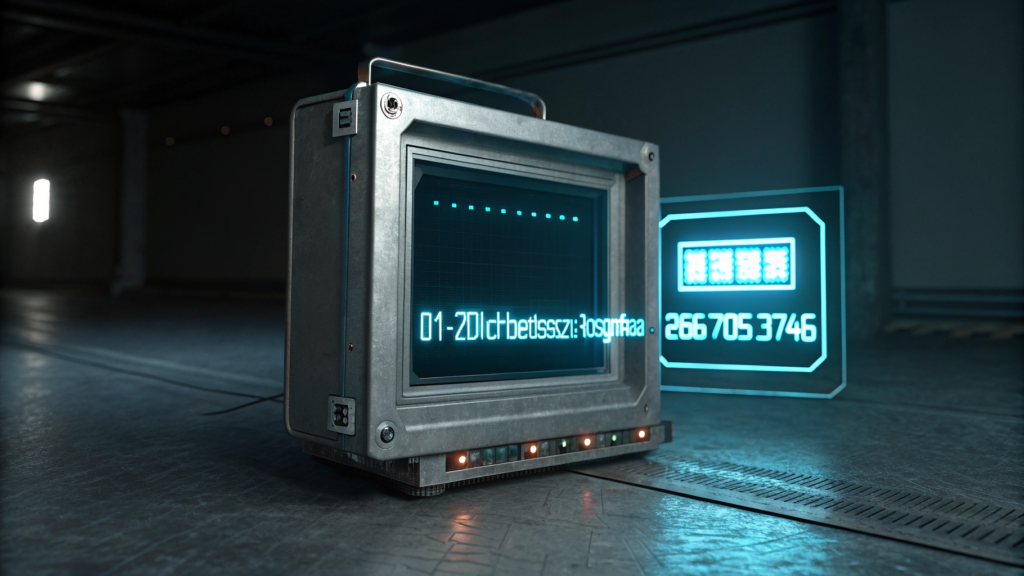
In the digital world, unique codes and identifiers play a vital role in organizing, securing, and tracking information across different systems.
One such identifier is 001-gdl1ghbstssxzv3os4rfaa-3687053746, which has attracted attention due to its structured format and potential applications. While the code may look complicated at first, it serves a specific function depending on the platform or system using it. Understanding such codes is essential for developers, IT professionals, and digital users who deal with databases, encrypted files, or tracking systems.
This article explores the structure, uses, significance, and practical aspects of 001-gdl1ghbstssxzv3os4rfaa-3687053746 in detail.
What is 001-gdl1ghbstssxzv3os4rfaa-3687053746?
This code appears to be a unique digital identifier, often used to mark, reference, or secure data in large systems. It may represent a transaction ID, tracking number, encrypted key, or database entry. Such identifiers are generated to maintain accuracy and security, ensuring that each piece of data can be distinguished from others without confusion.
Structure of the Code
The format of 001-gdl1ghbstssxzv3os4rfaa-3687053746 is divided into segments. The prefix “001” typically indicates the batch or sequence number. The middle alphanumeric string likely functions as a unique encoded identifier, while the ending number sequence represents a database reference or checksum. This structured arrangement allows systems to quickly validate and categorize information.
Possible Applications
Codes like 001-gdl1ghbstssxzv3os4rfaa-3687053746 can be found in various sectors such as logistics, cybersecurity, software development, and data management. In logistics, similar codes track shipments globally. In cybersecurity, they may act as encrypted tokens. In software, they often represent license keys or internal reference IDs. Their flexibility makes them useful for both public-facing and backend systems.
Importance in Data Management
Unique identifiers help prevent duplication, confusion, and errors in data handling. In large networks where thousands of entries are processed simultaneously, a single mistake can lead to major problems. Using codes like 001-gdl1ghbstssxzv3os4rfaa-3687053746 ensures that every entry remains distinct, traceable, and verifiable. This boosts reliability and improves organizational efficiency.
Role in Security and Encryption
Complex alphanumeric codes are often used as part of encryption processes to secure sensitive data. Such codes make it difficult for unauthorized users to guess or replicate keys, protecting databases from breaches. If 001-gdl1ghbstssxzv3os4rfaa-3687053746 functions as an encrypted identifier, it likely contributes to ensuring data integrity and controlled access.
How Systems Generate These Codes?
These codes are typically created using algorithms that combine randomization with structured patterns. The goal is to produce identifiers that are unique but still follow a consistent format. Hashing functions, timestamp encoding, and batch markers are commonly used techniques. Once generated, the code is stored in a system database and referenced when needed.
Common Misinterpretations
Many users assume such long strings represent viruses or malicious content, but that is not always true. In most cases, codes like 001-gdl1ghbstssxzv3os4rfaa-3687053746 are harmless identifiers used internally. Misunderstanding these codes can lead to unnecessary panic or deletion of important data. Recognizing their purpose helps avoid these mistakes.
Troubleshooting Issues Related to the Code
Occasionally, systems may display errors linked to these identifiers if data is corrupted, duplicated, or improperly formatted. Troubleshooting involves checking logs, verifying database entries, and ensuring the code matches expected patterns. If the code is part of a transaction, tracing its lifecycle through the system can reveal where the issue occurred.
Future of Digital Identification Codes
As systems grow more complex, the need for secure and unique identifiers will increase. Codes like 001-gdl1ghbstssxzv3os4rfaa-3687053746 may evolve into even more sophisticated formats, possibly integrating blockchain technology or quantum encryption. Future identifiers will likely be smarter, self-verifying, and adaptable to new data environments.
Conclusion
The code 001-gdl1ghbstssxzv3os4rfaa-3687053746 represents more than just a random string—it’s a structured and functional identifier with potential applications in security, data management, and system organization.
Understanding how such codes work can help users navigate technical platforms more confidently and troubleshoot issues more effectively. As digital ecosystems continue to expand, unique identifiers will remain essential for maintaining order, security, and efficiency.
Recognizing their value is an important step for anyone working in technology or data-driven environments.
Frequently Asked Questions (FAQs)
1. What is 001-gdl1ghbstssxzv3os4rfaa-3687053746?
It is a structured digital identifier used to track, reference, or secure specific data within systems. Its format helps maintain uniqueness and accuracy.
2. Where is this type of code commonly used?
Such codes are often used in logistics, cybersecurity, software licensing, and database management for tracking and validation purposes.
3. Is this code dangerous or a virus?
No, this code is not inherently dangerous. It usually serves as an internal system reference and does not pose a security threat on its own.
4. How are these codes generated?
They are generated using algorithms that combine random sequences, batch numbers, and reference markers to create unique identifiers.
5. Can this code be linked to personal information?
On its own, the code does not contain personal information. However, it can be associated with data entries that may include personal details depending on the system.
6. What should I do if I encounter this code in an error message?
You should check logs or database entries to verify the code’s integrity. The error might be related to data mismatch or corruption.
7. Can these codes be changed manually?
In most systems, these codes are auto-generated and should not be manually edited, as this can cause mismatches and system errors.
8. Why are such codes so long and complex?
The length and complexity ensure uniqueness, reduce the chance of duplication, and improve security by making them harder to guess.
9. Are these identifiers used in blockchain systems?
Yes, similar codes are often used in blockchain for transaction tracking, providing a secure and transparent way to identify records.
10. What is the future of identifiers like this?
Future identifiers may include advanced encryption, blockchain integration, and self-verifying mechanisms to enhance data security and reliability.





